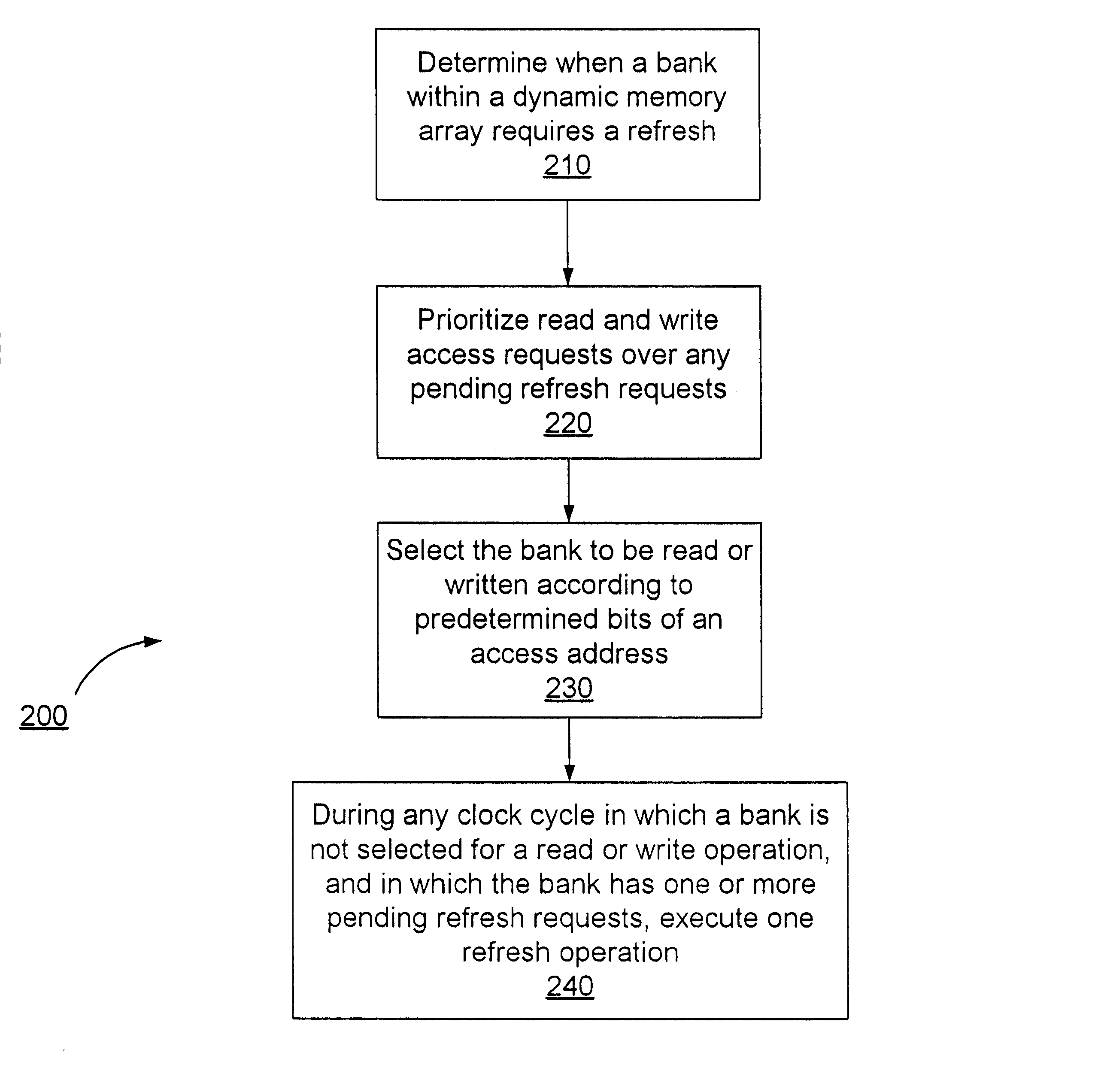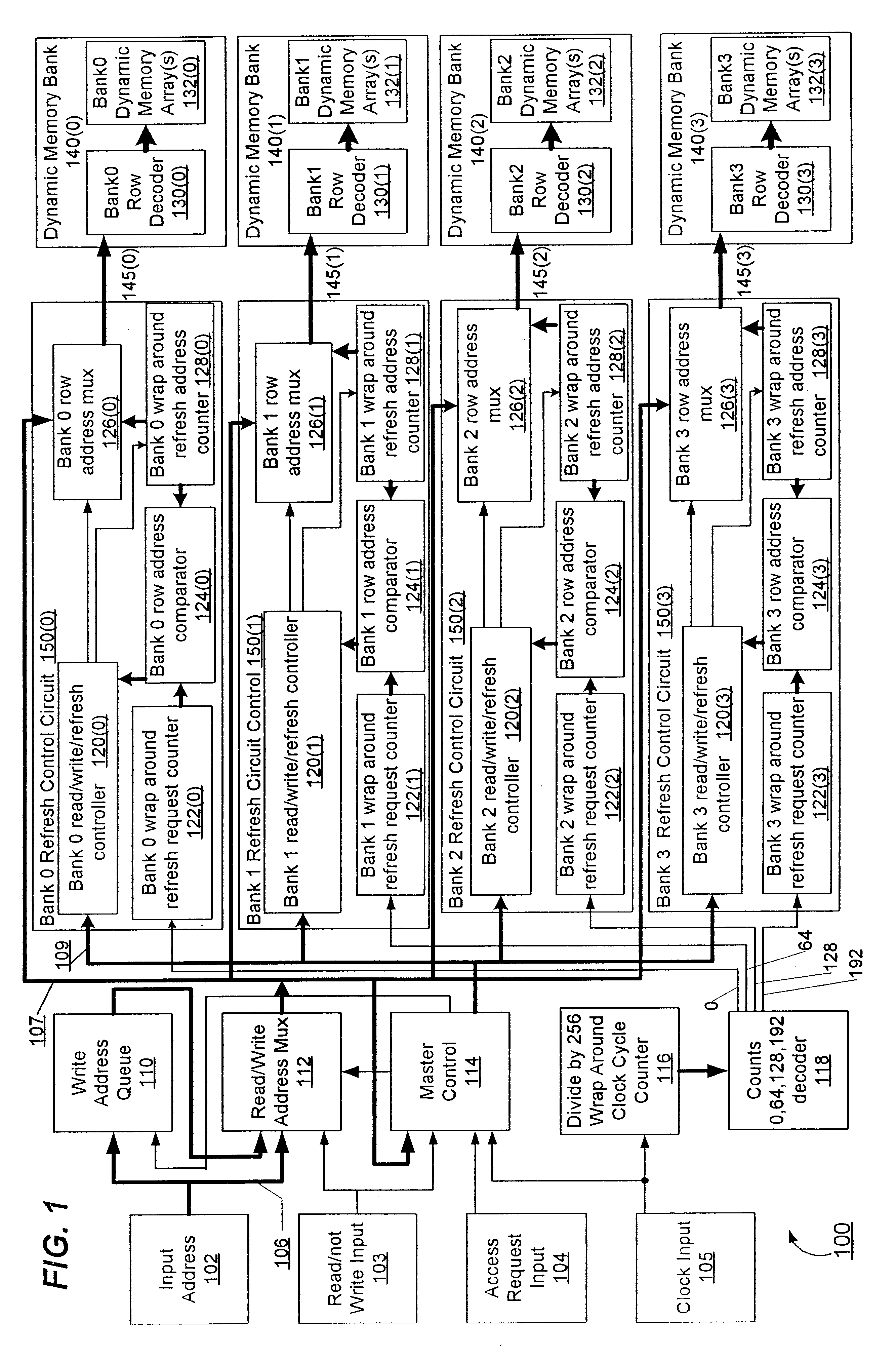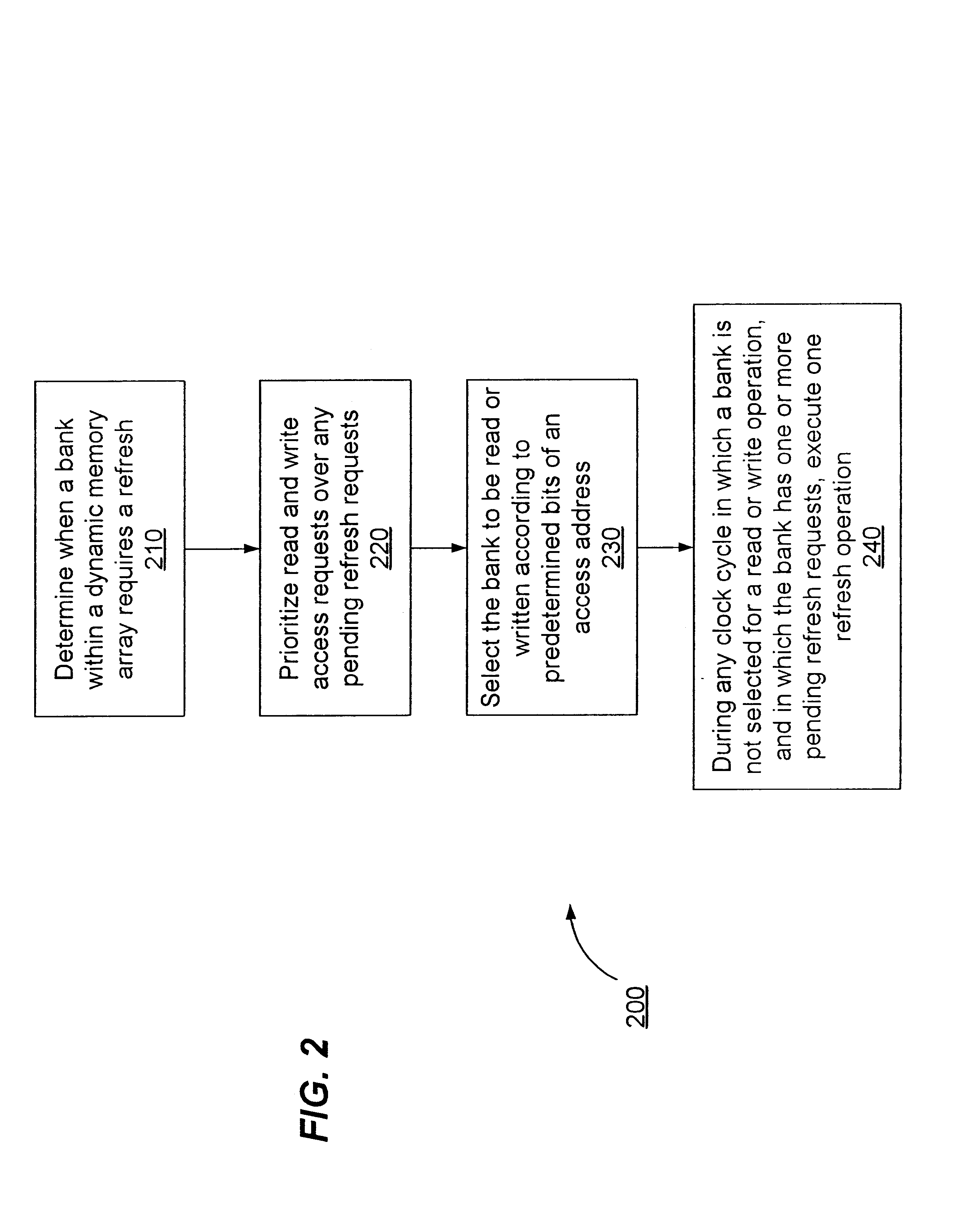Integrated circuit random access memory capable of automatic internal refresh of memory array
a random access memory and integrated circuit technology, applied in the direction of memory adressing/allocation/relocation, instruments, transistors, etc., can solve the problem of denying the memory bank the opportunity to meet the refresh requirements, and achieve the effect of less space on the integrated circuit and avoiding a delay
- Summary
- Abstract
- Description
- Claims
- Application Information
AI Technical Summary
Benefits of technology
Problems solved by technology
Method used
Image
Examples
Embodiment Construction
Overview
An embodiment of the present invention is directed to a memory device including internal refresh control circuitry for automatically performing refresh of the memory array without user intervention and almost always without access interruption. A separate refresh control circuit is provided for each memory bank, each control being configured to execute a refresh operation, for its respective memory bank, during the first available cycle following a refresh request which request occurs once every, for example, 256 external clock cycles.
Unlike most earlier devices, an embodiment is directed to “hidden” refresh cycles that can fully complete in just one clock cycle, allowing a read or write access cycle to begin in the same memory bank on the very next clock cycle, if required, in accordance with a next command and address received. Thus, even if the memory bank is free for only one cycle, a hidden refresh operation can be fully performed and the memory bank ready on the very n...
PUM
 Login to View More
Login to View More Abstract
Description
Claims
Application Information
 Login to View More
Login to View More - R&D
- Intellectual Property
- Life Sciences
- Materials
- Tech Scout
- Unparalleled Data Quality
- Higher Quality Content
- 60% Fewer Hallucinations
Browse by: Latest US Patents, China's latest patents, Technical Efficacy Thesaurus, Application Domain, Technology Topic, Popular Technical Reports.
© 2025 PatSnap. All rights reserved.Legal|Privacy policy|Modern Slavery Act Transparency Statement|Sitemap|About US| Contact US: help@patsnap.com



